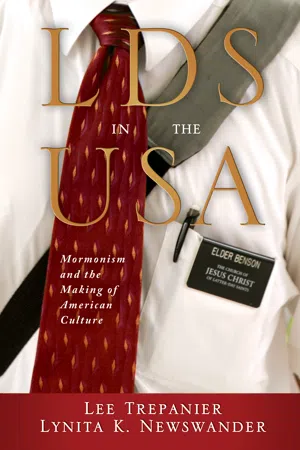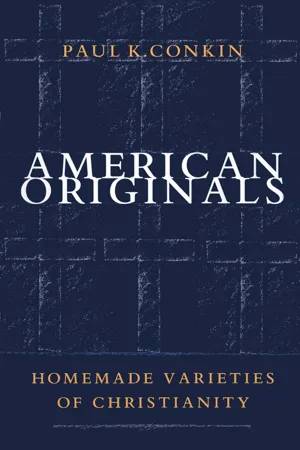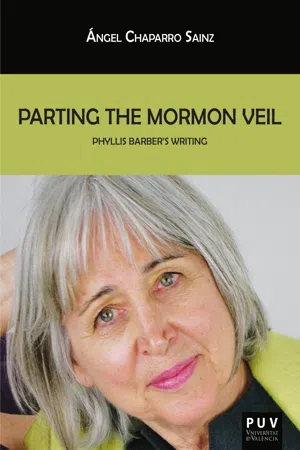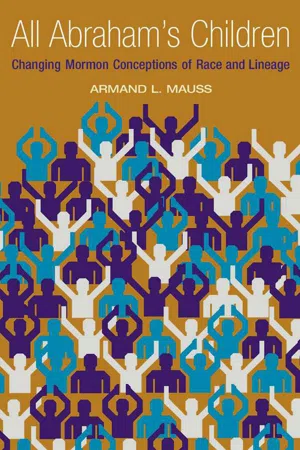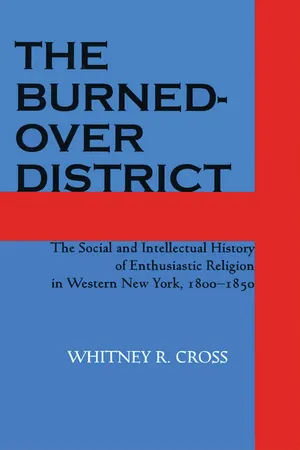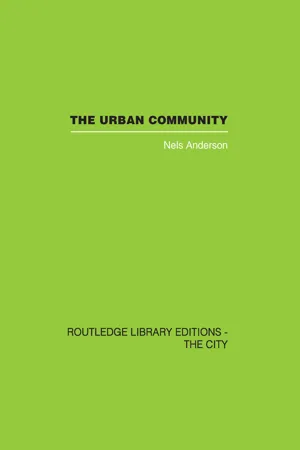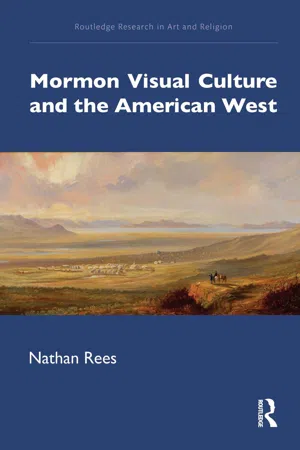History
Mormon migration
Mormon migration refers to the movement of members of the Church of Jesus Christ of Latter-day Saints (LDS) from the eastern United States to the Salt Lake Valley in Utah during the mid-19th century. Fleeing religious persecution, the Mormons sought a place where they could practice their faith freely. The migration was a significant event in American history, shaping the development of the western frontier.
Written by Perlego with AI-assistance
Related key terms
7 Key excerpts on "Mormon migration"
- eBook - ePub
LDS in the USA
Mormonism and the Making of American Culture
- Lee Trepanier, Lynita K. Newswander(Authors)
- 2016(Publication Date)
- Baylor University Press(Publisher)
According to one historian, the Mormon religion “was infused with a great deal of spread-eagle American nationalism at a time when Manifest Destiny had become the watchword of the nation.” 17 This is apparent in the westward movement of the Church, eventually into what was at the time Mexican territory, and its significant role in settling land west of the Rocky Mountains. This movement and industry were guided by a desire among the Mormons for a land of their own, and largely motivated by their pursuit of the freedom to rule themselves at a safe distance from those who would “hurt or make afraid.” 18 Furthermore, early Church members saw themselves as part of the divine destiny of the United States, and they took the ideology of expansion personally, implementing it in their communities and even in their own homes. For example, non-Mormons in early America generally had much larger families than their counterparts in England and Europe. Tocqueville noted that this might be because so much land needed to be filled, with no scarcity of resources or potential inheritance present to check growth. It was not unusual for American families of the period to have six, seven, or more children—even with a high rate of infant mortality on the frontier. 19 But the Mormons outdid themselves when they adopted wholeheartedly this American ideal. Perhaps because they were intent on populating their own cities and territories, Mormons had extremely large families, even compared to their contemporaries. Of course, much of this population boom was facilitated by the practice of polygamy (a practice officially ended in 1890), which allowed one man to father as many as thirty or more children (sometimes sixty or more). 20 Mormon cultural practices and theological doctrines such as these reflected and supported a nineteenth-century American perspective on the world - eBook - ePub
American Originals
Homemade Varieties of Christianity
- Paul K. Conkin(Author)
- 2000(Publication Date)
- The University of North Carolina Press(Publisher)
In the late winter of 1847 Young formed a pioneer camp of about 150 for the final advance beyond the mountains. These celebrated pioneers took the easiest possible route—through Fort Laramie, over the south pass, and then across what is now southwest Wyoming into the valley of the Great Salt Lake. They created a new trail (soon worn by Mormon travelers) from Council Bluffs to Laramie and then departed the Oregon Trail for their descent into the valley (on modern maps the whole is identified as the Mormon Trail). The advance party only entered the valley on July 21, too late to plant food crops. An ill Brigham Young arrived two days later. By July 24 the whole camp was on the site of what became Salt Lake City and had dedicated the land. In the exultation of the moment the saints renewed their covenant and rebaptized one another (such rebaptisms were later ended by the church). Even in this first, foreshortened summer the saints built a fort, named streams, explored several sites for villages, and began building small dams and irrigation canals, ensuring crops in 1848. Young and others helped plat the city (using some designs earlier drafted by Joseph Smith), with broad streets, large rectilinear blocks, and a choice location for the future temple. Small bands of Mormons came from California, including some of the Mormon Battalion joined by Mormons from Mississippi who had taken a ship to California. By the fall almost 1,500 had crossed in wagons from winter camp, making over 2,000 in the valley by the end of the year. But Young and many of the original pioneers hurried back east to lead the great migration in 1848.In 1848 most Mormons in western Iowa moved to Utah in a series of camps, a migration that continued year after year for the next decade. Only in one case, that of several handcart companies that tried crossing in 1856, did the migration come close to disaster. A few Mormons decided not to go on to Utah in spite of admonitions from Young, and one Mormon missionary to the Indians, Alpheus Cutler, formed a small schismatic group (Culterites) in Iowa that still survives. In most cases the camps were disciplined and well organized, with better than normal relationships with the Indians. After 1848 an increasing proportion of the migrants were European immigrants, who came at the request of Young to the gathering place for all the saints. European converts had another role: as much as their resources permitted, they collected funds to help finance this huge migration.Back at Salt Lake City, the early residents were able to plant their irrigated grain crops in 1848, only to have the fields threatened by a cyclical grasshopper explosion (these are now called Mormon crickets). It seemed a miracle, an omen, when seagulls appeared and ate most of the “crickets,” another, often exaggerated part of the great Mormon epic. The grain harvest was still limited but the pioneers celebrated it by a festival in the fall. The massive arrival in 1848 led to the expansion of settlement throughout the larger valley and the formation of new towns. By 1849 the church had divided the settlements into stakes and wards. It also set up a permanent emigration fund to help both American and European members cross the plains. The dire poverty and short food supplies of 1848 yielded to some prosperity in 1849, as Mormons were in a perfect position to outfit those flocking to the new goldfields of California. Young Mormon men, some from the Mormon Battalion, remained in the minefields of California, sent a growing supply of gold to Salt Lake City, and provided the basis of a short-lived mint established there by Brigham Young. - eBook - ePub
Parting the Mormon Veil
Phyllis Barber's Writing
- Ángel Chaparro Sanz(Author)
- 2017(Publication Date)
- Publicacions de la Universitat de València(Publisher)
As I suggested before, it is significant that this mythic use of the Mormon past belongs to the same ideal that America took as a source for its own national identity: the American West. Mormons relied on that mythology, but with a personal flair: a certain specific set of characteristics that insert their own idiosyncrasy to a narrative that encompasses a wider identity, against which they built their own. But, at the same time, Mormon experience of the American West introduces an ambiguous and paradoxical element that contributes to the opening up of a different approach to the history of the American West, one that shares with recent trends in academic research an emphasis on complexity and exploration. Throughout the history of the American West, the Mormons occupy a place that seems unbalanced and tricky. Although, due to their different (and thus dangerous) characteristics, they stood in apparent opposition to the imperialist strands that marked the pioneering of the American West, they were also involved in a process of expansion and subjugation. In short, Mormons can be perceived as a minority group within the experience of the American West. To a large extent, they match a mainstream pattern that they, on other occasions, divert from.To write an overview of the history of The Church of Jesus Christ of Latter-day Saints is an overwhelming task that encompasses different periods that, on occasion, run parallel to the history of the United States of America.3 In fact, to encapsulate the history of the Mormon community, one needs to travel from the beginnings of the United States as a country and the key events of the pioneering days to our present time. Such a journey reaches over a vast expanse of land: from the state of New York to the deserted land around the Great Salt Lake and even further to California, and southwards down to Mexico. In the interest of clarity, I have divided Mormon history into six different periods.Starting from the beginning, that is, from the very foundation of the Church, the first period demands an appraisal of the foundation of the Church. Joseph Smith’s first vision opens the period and it ends with Governor Bogg’s Extermination Order, which removed Mormons from Missouri (Blair 64). This period seems to establish a pattern that will be repeated in the following years. - eBook - ePub
All Abraham's Children
Changing Mormon Conceptions of Race and Lineage
- Armand L. Mauss(Author)
- 2010(Publication Date)
- University of Illinois Press(Publisher)
No doubt there are other important differences as well. Yet the Mormons, like the ancient Israelites, suffered a loss of their promised land, despite divine covenants. During the chaos following the end of their “Kingdom on the Mississippi” and the assassination of their prophet-king, they came perilously close to complete fragmentation and thus annihilation as a separate people, again despite divine protection and promises to them as God’s own people. All of these setbacks required explanation through a new narrative history. 16 Apart from the extraordinary spiritual and material suffering entailed in these setbacks, their resettlement in Utah (like the Jewish resettlement during the Second Temple era) brought together religious refugees of varied origins, not only from the considerably different regions on either side of the Mason-Dixon line in the United States but also from the British Isles, Scandinavia, Germany, and other European countries. Against this background, the scribes and prophets of Mormonism faced much the same task as had their ancient Jewish counterparts—namely, the creation of a new people, a new ethnos, unified by a common understanding, explanation, and vindication of their past; by renewed covenants with their God; and by the retrospective creation or discovery of a common ancestry, particularly an ancestry in which they could share pride or even chauvinism as a defense against the calumny and denigration increasingly heaped on them from the outside. 17 It is not my purpose to offer the kind of comprehensive historiography and analysis of ethnic identity construction for the Mormons that Mullen has provided for the ancient Hebrews. Rather, I propose to focus on only one aspect of that ethnic identity formation: the retrospective construction of Mormon lineage and the part it played in the creation of Mormon ethnicity from roughly the mid-nineteenth century to the mid-twentieth - eBook - ePub
The Burned-over District
The Social and Intellectual History of Enthusiastic Religion in Western New York, 1800–1850
- Whitney R. Cross(Author)
- 2015(Publication Date)
- Cornell University Press(Publisher)
It seems conservative to estimate that of Mormons brought into the church from the Burned-over District at least three-fourths must have been gathered by returning itinerants between 1831 and the early fifties. Yankee groups in Ohio, Pennsylvania, and New England itself responded similarly, but less intensively, and after 1850 a substantial portion of new members came from England and Scandinavia. Obviously, then, Mormonism should not be called a frontier religion in terms of the persons it appealed to, any more than it should in terms of its origin.To be sure the church existed generally on the frontier and kept moving westward with the tide of settlement. It also carried into the West a number of ideas characteristic of the Burned-over District. Its location was determined by the fact that the evangelistic-mindedness from which it developed in the beginning, and which constantly fed it with members, had little tolerance for such an unorthodox offspring, and drove the Saints by its persecution along their westering course. But neither the organization of the church, nor its personnel, nor its doctrines were frontier products. All belonged rather to that Yankee, rural, emotionalized, and rapidly maturing culture which characterized western New York so markedly in the second quarter of the nineteenth century.1 Fawn M. Brodie, No Man Knows My History: The Life of Joseph Smith, the Mormon Prophet (New York, 1945), 1-5, 7-9.2 See maps I and II.3 Palmyra Herald and Canal Advertiser, July 17, 1822; Western Farmer (Palmyra), Summer, 1822, passim; Wayne Sentinel (Palmyra), Oct., Nov., 1823.4 Brodie, No Man Knows, 9-11.5 Rev. James H. Hotchkin, A History of the Purchase and Settlement of Western New York, and of the…Presbyterian Church in That Section (New York, 1848), contains outline histories of each church in the denomination west of Madison County. Tabulated geographically, it provides a reliable guide to revival cycles and locations.6 Western Farmer, Feb. 27, 1822; Palmyra Herald, Jan. 15, 1823.7 John H. Evans, Joseph Smith, An American Prophet (New York, 1945), 30-32; Brodie, No Man Knows, 10, 11, 55. Land values ran from twenty to thirty-five dollars an acre by 1833, Rochester Daily Advertiser, - eBook - ePub
The Urban Community
A World Perspective
- Nels Andersen(Author)
- 2013(Publication Date)
- Routledge(Publisher)
26In the settlement of new lands, not only were the Indians dispossessed, but in some cases entire tribes were moved forcibly to other, sometimes less desirable, locations. As far as the white Americans are concerned, there is apparently only one outstanding example of migration by force, and that concerns the Mormons who now are settled in the intermountain region, mostly in Utah and parts of surrounding states. The Mormons, mainly because of religious differences, were first driven from Ohio, later from Missouri, and still later from Nauvoo, their dream city in Illinois.27 Other examples which might be cited have been minor. We may say with confidence that the United States has been quite free from enforced migrations or migrations due to stress.But the United States has been the recipient of vast numbers of migrants who have had to flee from oppression—from the religious persecutions that brought the Puritans to New England, the Quakers to Pennsylvania, and the Catholics to Maryland, to the most recent reception of political refugees from Hungary. In large measure, these refugee and escapee peoples have entered American cities and have contributed in developing the American type of dynamic industrial urbanism and ail that it implies. On this subject we can do no better than to call attention to the observations of Kulischer with reference to his study of migrations in Europe which, as he concludes, stimulated migrations to America. But the stimulus during the nineteenth century was what he called the "vanguard" of internal trail-blazing migration:. . . which opened still further territories and created new resources and new markets for the industrial capitals of Europe. The central column was crossing the ocean. The mighty rearguard was flocking to Europe's restlessly growing industrial centers. These dual currents of expansion and concentration were even more accelerated when industry itself started to migrate, creating new centers nearer the areas of colonization. By its young industry the New World exerted an even stronger attraction upon the migratory stream. The decisive factor was that the process of colonization was in progress.28 - eBook - ePub
- Nathan Rees(Author)
- 2021(Publication Date)
- Routledge(Publisher)
I have (loosely) limited my chronological compass to the era in which Utah was recognized as a territory—a half-century beginning shortly after Mormons arrived in the Great Basin and ending with Utah’s statehood in 1896. Latter-day Saints were certainly already creating images prior to the Western relocation—but their work emanated from a significantly different social, political, and even theological context. Utah’s statehood makes a convenient ending point because it marked a monumental turning-point in Mormon culture, concluding the era of polygamy; however, I address images in every chapter from after this period. This includes work by artists who had been active during the territorial era, but also extends to consider images from the early twentieth century that demonstrated contiguities with earlier concepts or evinced new directions in Mormon art. Furthermore, while the field of Mormon studies encompasses a much broader world, my focus on the cultural contexts of Utah Territory limits my attention to the Church of Jesus Christ of Latter-day Saints as led by Brigham Young and his successors. I hope that other scholars will attend to the visual cultures of the multiple diverse denominations that arose from Joseph Smith’s Restoration. 29 Chapter 2, “Visions and Visuality,” begins by excavating the theology of visuality that informed nineteenth-century Mormonism. Vision constituted a central element of Mormon belief; beginning with Joseph Smith’s “First Vision,” the church had developed through a series of visionary events. In Mormonism, sight gave access to the divine, and seeing was a critical means of obtaining truth. I explore how nineteenth-century Mormons reconciled sacred/inner and worldly/outer forms of vision—gradually developing a religious visual culture that sought to bridge the two realms by providing vicarious witnesses in the form of visions mediated through images
Index pages curate the most relevant extracts from our library of academic textbooks. They’ve been created using an in-house natural language model (NLM), each adding context and meaning to key research topics.
